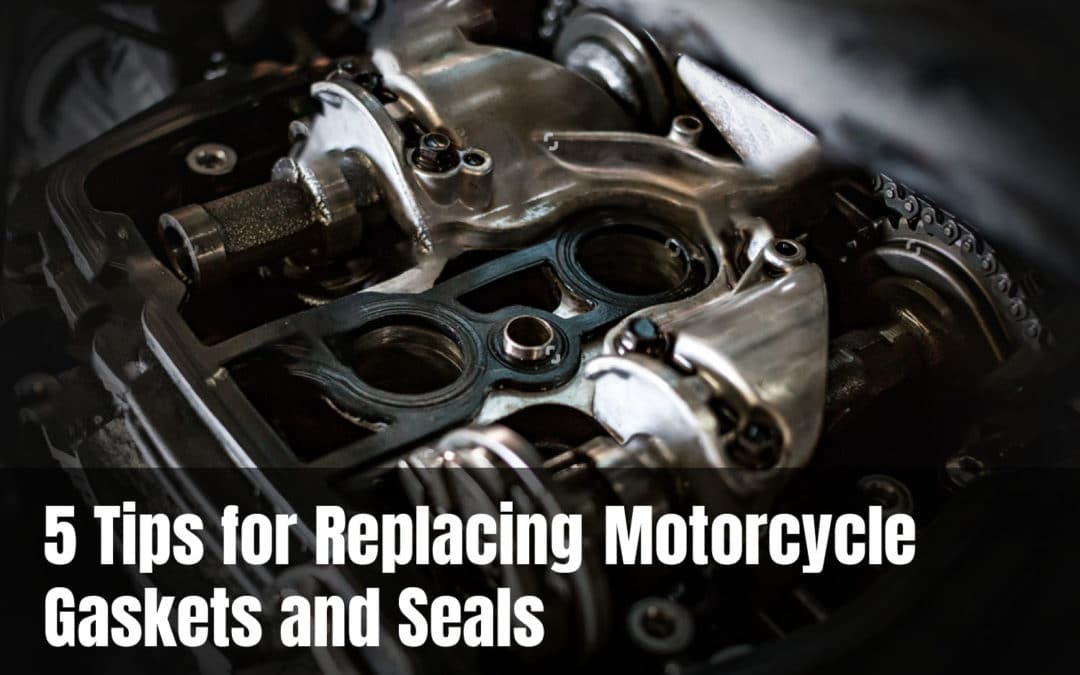Every good and responsible rider knows they can’t be on the road without being 100% sure about their motorcycle’s condition. Vehicle owners need to conduct a quick but complete check of vital motorcycle parts before every ride, including headlights, tires, exhaust pipes, and engine.
Further examination of the engine’s gasket and seals is also necessary to ensure the integrity of the machine that powers the motorcycle. These maintenance checks are absolute requirements to protect riders, other motorists, and commuters.
However, gaskets and seals in motorcycles are prone to wear and tear. As these parts become old, they can result in oil leaks. So once these signs of trouble appear, it means it’s time to replace worn-out gaskets and seals to avoid road inconveniences and accidents.
5 Tips for Replacing Motorcycle Gaskets and Seals
In this section, you’ll learn the steps for replacing motorcycle gaskets and seals, but first, here’s a quick refresher on what these parts do.
A gasket acts as a mechanical seal between two objects. When it comes to the engine, the gasket fills the space between the two metal plates or the so-called block, the engine’s outer covering. Each time you replace the gasket, you have to use a seal to keep the gasket stable.
Here are steps to help you perform a safe and effective replacement of gaskets and seals on your motorbike.
1. Read the manual for the manufacturer’s recommendations.
As with any machine, the user’s manual is your go-to guide for information on proper motorcycle care and maintenance. Check the manual for specific instructions and recommendations in using sealants or other additives when installing new gaskets. Your manufacturer may require a particular brand, model, or type of gasket maker that’s most compatible with your bike engine.
2. Check the orientation before taking things apart.
If you’re not familiar with gasket replacements, it can be more challenging to put a new one in than taking the old part out. Thankfully, the old gasket’s orientation will guide you on positioning the new one upon installation.
As a rule of thumb, the shape of the gasket should follow that of the block. But for your peace of mind, you can take a photo of the old gasket setup and the rest of the engine so you can refer to it and ensure you install the replacement correctly.
3. Avoid using sharp tools and abrasive cleaners.
In some cases, removing old gaskets will require some tools. These tools help loosen the part of the old gasket that you can’t take apart with your bare hands.
It’s safer to use gasket removers or solvents for gasket materials that won’t come off easily. Avoid using razor blades or any sharp tool to scrape the metal surface since these can cause small scratches or imperfections that can lead to oil leaks later on.
Be ready to soak the old gasket overnight in the solvent or solution, and then you may use soft scrubbing pads to break down the tough components of the old gasket.
4. Prepare the metal surfaces.
Before installing the new gasket, ensure that the plates or metal surfaces are clean. Check them for residue that may have come from gasket removers’ chemicals, as these can damage the plates.
Refer back to your user’s manual and follow the manufacturer’s instructions on how to get rid of traces of these chemicals off the metal surfaces. If you see any damaged portions on the plates, be prepared to replace them with the gasket.
5. Get a replacement whenever your motorcycle undergoes repair or service.
Every time you pull things apart on your motorcycle for a checkup or repair, you must replace the gaskets and seals, even if they still look usable without cracks or dents.
The logic behind this is that gaskets are meant for single-use only, not to be recycled or reused. Putting back old gaskets can be a potential source of leakage and, ultimately, damage the engine because their ability to fill gaps deteriorates with continued use.
This precautionary measure of replacing old gaskets and seals also guarantees the optimum performance of your motorcycle’s newly installed components.
Out with the Old, In with the New
Your motorbike’s top form or condition is essential in road safety for yourself and others. Old motorcycle gaskets and seals should go because they can result to oil leaks and engine trouble, which you want to avoid.
Make it a habit to check if your bike needs new gaskets and seals. High-quality replacement parts and repair tools will be your most reliable companion in reinforcing the moving parts within your motorcycle’s engine.
You can get replacement gaskets and seals from Simplex, a premier distributor of industrial parts and tools for motorcycle owners and mechanics. Browse the shop to check our available products.

